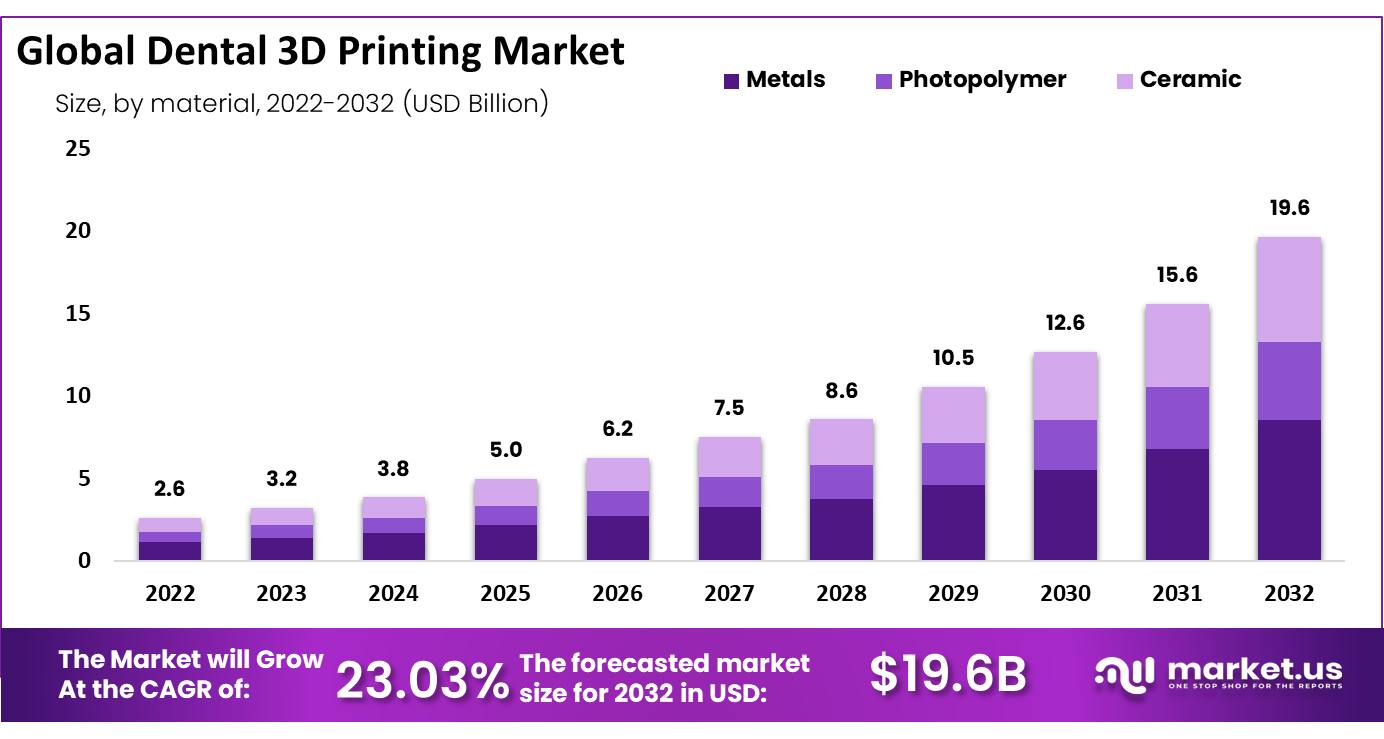Improved Printing Materials Elevate Quality of 3D Printed Dental Products
Enhancing Durability and Quality
The use of improved printing materials, such as biocompatible resins and metals, has revolutionized the dental industry. These innovative materials not only enhance the quality of 3D printed dental products but also improve their durability. As a result, dental professionals can create precise and long-lasting dental implants, crowns, and other prosthetics with greater ease and efficiency.
Market Growth and Projections
According to a report from Market.us, the global dental 3D printing market has experienced significant growth in recent years, reaching a valuation of USD 3.2 billion. With a projected compound annual growth rate (CAGR) of 23.03%, the market is expected to reach a valuation of USD 19.6 billion by 2032. This growth is fueled by the increasing demand for high-quality dental products and the continual advancements in printing technology.
Impact on Industry and Patients
The adoption of improved printing materials in the dental industry has far-reaching implications for both industry professionals and patients. Dentists and dental technicians can now create custom-made dental products that are more precise, durable, and biocompatible than ever before. Patients, in turn, benefit from less invasive procedures, faster recovery times, and superior aesthetic results.
Effect on Individuals
For individuals, the use of improved printing materials in dental 3D printing means access to more advanced and personalized dental care. Patients can expect better fitting dental prosthetics, increased comfort, and improved overall oral health outcomes. The use of biocompatible materials also reduces the risk of adverse reactions and improves the longevity of dental implants and crowns.
Global Impact
On a global scale, the adoption of improved printing materials in dental 3D printing has the potential to revolutionize dental care worldwide. Developing countries, in particular, stand to benefit from more affordable and accessible dental prosthetics, thanks to the efficiency and cost-effectiveness of 3D printing technology. As the industry continues to grow and evolve, more people around the world will have access to high-quality dental care.
Conclusion
The advancement of printing materials in dental 3D printing is reshaping the way dental products are designed, produced, and utilized. With the use of biocompatible resins and metals, the quality and durability of 3D printed dental products have reached new heights, driving positive growth in the industry. As the market continues to expand, individuals and communities worldwide will benefit from enhanced dental care and improved oral health outcomes.





